 W
WThe Australian Army is Australia's military land force. Formed in 1901 through the amalgamation of the Australian colonial forces following federation, it is part of the Australian Defence Force (ADF) along with the Royal Australian Navy and the Royal Australian Air Force. While the Chief of the Defence Force (CDF) commands the ADF, the Army is commanded by the Chief of Army (CA). The CA is therefore subordinate to the CDF, but is also directly responsible to the Minister for Defence. Although Australian soldiers have been involved in a number of minor and major conflicts throughout Australia's history, only during the Second World War has Australian territory come under direct attack.
 W
WABCANZ Armies is a program aimed at optimizing interoperability and standardization of training and equipment between the armies of Australia, Canada, New Zealand, the United Kingdom, and the United States, plus the United States Marine Corps and the Royal Marines. Established in 1947 as a means to capitalize on close cooperation between the United States, United Kingdom, and Canada during World War II, the program grew to include Australia and New Zealand.
 W
WAirborne forces raised by Australia have included a number of conventional and special forces units. During the Second World War the Australian Army formed the 1st Parachute Battalion; however, it did not see action. In the post-war period Australia's parachute capability was primarily maintained by special forces units. In the 1970s and 1980s a parachute infantry capability was revived, while a Parachute Battalion Group based on the 3rd Battalion, Royal Australian Regiment was established in 1983. In 1997, a full time commando regiment was raised that was able to conduct large-scale operations which matured during the 2000s. In 2011, 3 RAR relinquished the parachute role with the Army deciding to opt out of a conventional parachute capability in preference to a special forces large-scale parachute capability.
 W
WArmy is the newspaper published by the Australian Army. The paper is produced fortnightly and is uploaded online so that members can access it when deployed overseas.
 W
WThe Australian Army Inventions Board was established in 1900, and played a significant role in Allied Research and Development during World War I. However by the late 1930s it had been allowed to become mostly inactive. It was revived in early 1940 under the name 'Army Central Inventions Board', though it was still generally known by its older name. In 1942 the board was reorganized into the Army Inventions Directorate. It was a government body of the Commonwealth of Australia, set up in 1942 to handle the thousands of inventions submitted by the public. These inventions numbered some 27,000; a mere 127 of which were eventually accepted by the Army as being of notable value or suitable for military purposes. The best known invention accepted by the Army Inventions Board was the Australian-designed Owen Gun, a machine carbine which took a few years to get off the ground.
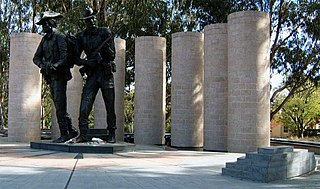 W
WThe Australian Army Memorial on Anzac Parade commemorates the service of Australian soldiers.
 W
WThe Australian Army Artillery Museum was an artillery museum located in North Fort, on the northern head of the entrance to Sydney Harbour, in Sydney, Australia.
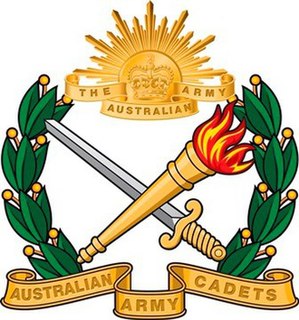 W
WThe Australian Army Cadets (AAC) is the youth military program and organisation of the Australian Army, tasked with supporting participants to contribute to society, fostering interest in Defence Force careers, and developing support for the Force. The program has more than 19,000 Army Cadets between the ages of 13 and 18 based in more than 200 units around Australia. The values of the AAC are "Service, Courage, Respect, Integrity and Excellence".
 W
WThe Australian Army was the largest service in the Australian military during World War I. The First Australian Imperial Force (AIF) was the Army's main expeditionary force and was formed from 15 August 1914 with an initial strength of 20,000 men, following Britain's declaration of war on Germany. Meanwhile, the separate, hastily raised 2,000-man Australian Naval and Military Expeditionary Force (AN&MEF), landed near Rabaul in German New Guinea on 11 September 1914 and obtained the surrender of the German garrison after ten days; it later provided occupation forces for the duration of the war. In addition, small military forces based on the pre-war Permanent Forces and part-time Citizen Forces were maintained in Australia to defend the country from attack.
 W
WThe Australian Army was the largest service in the Australian military during World War II. Prior to the outbreak of war the Australian Army was split into the small full-time Permanent Military Forces (PMF) and the larger part-time Militia. Following the outbreak of war, on 14 September 1939 Prime Minister Robert Menzies announced that 40,000 members of the Militia would be called up for training and a 20,000-strong expeditionary force, designated the Second Australian Imperial Force, would be formed for overseas service. Meanwhile, conscription was introduced in October 1939 to keep the Militia at strength as its members volunteered for the AIF. The Australian Army subsequently made an important contribution to the Allied campaigns in the Mediterranean, the Middle East and North Africa fighting the Germans, Italians and Vichy French during 1940 and 1941, and later in the jungles of the South West Pacific Area fighting the Japanese between late 1941 and 1945. Following the Japanese surrender Australian Army units were deployed as occupation forces across the South West Pacific. Meanwhile, the Army contributed troops to the British Commonwealth Occupation Force (BCOF) in Japan from 1946.
 W
WThe Australian Army Reserve is a collective name given to the reserve units of the Australian Army. Since the Federation of Australia in 1901, the reserve military force has been known by many names, including the Citizens Forces, the Citizen Military Forces, the Militia and, unofficially, the Australian Military Forces. In 1980, however, the current name—Australian Army Reserve—was officially adopted, and it now consists of a number of components based around the level of commitment and training obligation that its members are required to meet.
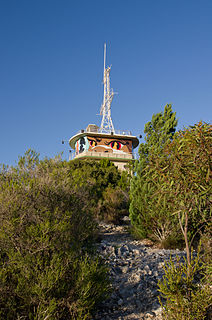 W
WCantonment Hill is a small rise overlooking the port city of Fremantle, Western Australia. Since the early 1900s the hill and the surrounding 4-hectare (9.9-acre) precinct has been mainly used for military purposes with extensive buildings now present. It has been under the control of the Department of Defence.
 W
WThe Chief of Army is the most senior appointment in the Australian Army, responsible to both the Chief of the Defence Force (CDF) and the Secretary, Department of Defence (SECDEF). The rank associated with the position is lieutenant general (3-star).
 W
WThe Cultana Training Area is an Australian Army training area on northeastern Eyre Peninsula in South Australia between Port Augusta, Whyalla and Iron Knob. It includes the former Baxter Detention Centre. The training area was enlarged in 2014 to accommodate training needs of 1st Brigade and 7th Battalion, Royal Australian Regiment. The lease of the land includes provisions for mining access. It also has an Indigenous Land Use Agreement with the Barngarla people.
 W
WField marshal is the highest rank of the Australian Army and was created as a direct equivalent of the British military rank of field marshal. It is a five-star rank, equivalent to the ranks in the other armed services of admiral of the fleet in the Royal Australian Navy, and Marshal of the Royal Australian Air Force. The subordinate army rank is general.
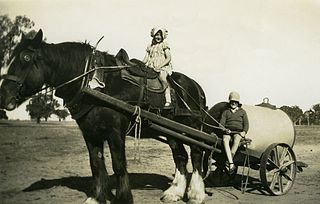 W
WA furphy is Australian slang for an erroneous or improbable story that is claimed to be factual. Furphies are supposedly 'heard' from reputable sources, sometimes secondhand or thirdhand, and widely believed until discounted. The word is said to derive from water carts designed and made by a company established by John Furphy of J. Furphy & Sons of Shepparton, Victoria. The steel and cast iron tanks were first made in the 1880s and were used on farms and by stock agents. Many Furphy water carts were used to take water to Australian Army personnel during World War I in Australia, Europe and the Middle East.
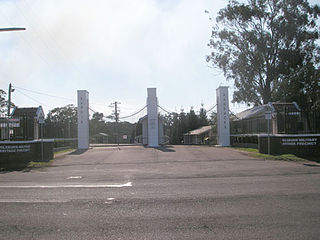 W
WIngleburn Army Camp was a purpose built camp constructed in 1940 for the Australian Army at Ingleburn, New South Wales, Australia.
 W
WThis list includes Australian recipients of the Victoria Cross and the Victoria Cross for Australia.
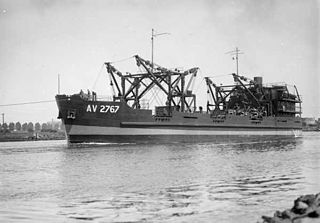 W
WThe Australian Army has operated numerous ships and watercraft.
 W
WMabel Josephine (Jo) Mackerras was an Australian zoologist, entomologist and parasitologist. Her research and life’s work contributed to entomology, veterinary medicine and medical science. Throughout her life she held a wide range of positions and duties that included Army medical officer, entomologist, medical scientist, and parasitologist. Mackerras was a major during WWII and served in the Army Malaria Research Unit. In an application for King’s Birthday Honours her work earned the citation,: "few women can have made a greater contribution to the Allied war effort".
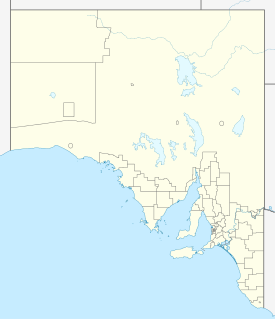 W
WThe Murray Bridge Training Area is an Australian Army training area located in South Australia in the locality of Burdett about 7 kilometres east of the city of Murray Bridge and about 70 kilometres east of the centre of the city of Adelaide. The training area was established prior to 1970. As of 2011, the training area contained shooting ranges for use with small arms for distances up to 800 metres, space for the training of subunits from Australian Army units located within South Australia and support facilities such as a “vehicle maintenance compound.” An area of about 71 hectares within the training area was developed as an artificial wetland in 1992 for the purpose of treating effluent that would otherwise have been discharged into the Murray River. This wetland has been listed as a wetland of national importance since at least 1995.
 W
WThe Officer Cadet School, Portsea was an officer training establishment of the Australian Army. Established at Portsea in Victoria, Australia, in 1951 to provide training to officer cadets prior to commissioning, for many years OCS provided the Australian Regular Army with the bulk of its junior officers. However, following a review of military training establishments in Australia in the mid-1980s, the school was eventually closed in 1985, as the Royal Military College, Duntroon, assumed sole responsibility for training Army officers.
 W
WThe Pentropic organisation was a military organisation used by the Australian Army between 1960 and 1965. It was based on the United States Army's pentomic organisation and involved reorganising most of the Army's combat units into units based on five elements, rather than the previous three or four sub-elements. The organisation proved unsuccessful, and the Army reverted to its previous unit structures in early 1965.
 W
WPlan Beersheba was a significant restructure of the Australian Army, announced in 2011. The process of implementing the organisational changes began in 2014, and was completed in 2017.
 W
WRegimental Sergeant Major of the Army (RSM-A) is the most senior Warrant Officer in the Australian Army. It is a singular appointment – it is only held by one person at any time. RSM-A holds the unique rank of Warrant Officer (WO) which is senior to Warrant Officer Class One. The special insignia for the RSM-A is the Australian coat of arms with a wreath around it. The eleventh and current Regimental Sergeant Major of the Army is Grant MacFarlane.
 W
WThe Rising Sun badge, also known as the General Service Badge or the Australian Army Badge, is the official insignia of the Australian Army and is mostly worn on the brim of a slouch hat or, less frequently, on the front of a peaked cap for Army personnel filling certain ceremonial appointments. The badge is readily identified with the spirit of ANZAC, the legend of the Australian soldier, and the esprit de corps of the Army itself, due to its association with the landings at Gallipoli in 1915. Today, new recruits receive the badge with their initial issue of equipment, which happens within their first three days of enlistment.
 W
WThe Royal Military College, Duntroon, also known simply as Duntroon, is the Australian Army's officer training establishment. It was founded at Duntroon, in Canberra, Australian Capital Territory, in 1911 and is at the foot of Mount Pleasant near Lake Burley Griffin, close to the Department of Defence headquarters at Russell Hill. It is comparable to the United Kingdom's Royal Military Academy Sandhurst and the United States Military Academy at West Point. Duntroon is adjacent to the Australian Defence Force Academy (ADFA), which is Australian Defence Force's tri-service military academy that provides military and tertiary academic education for junior officers of the Australian Army, Royal Australian Air Force and the Royal Australian Navy.
 W
WDuring World War I, recruitment marches or snowball marches to state capital cities were a feature of volunteer recruiting drives for the Australian Imperial Force in rural Australia. Between October 1915 and February 1916, nine marches were held starting from various points in the state; the most notable was the first march from Gilgandra, New South Wales, known as the Cooee march. The March of the Dungarees took place in south-eastern Queensland in November 1915. In 1918, in an effort to promote recruitment, another march was staged, but this was less spontaneous and the marchers in fact travelled by train.
 W
WThis article describes the current structure of the Australian Army. It includes the army's order of battle and the headquarters locations of major units. Members of the Australian Army also serve within joint units of the Australian Defence Force which fall outside the direct command of the Australian Army.
 W
WThe structure of the Australian Army during World War I included a small force of mostly militia which served in Australia and larger expeditionary forces which were raised for deployment overseas following the outbreak of the conflict in August 1914. The home army consisted of the small regular Permanent Forces, the part-time Citizen Forces, and the Australian Garrison Artillery, which were maintained in Australia to defend the country from attack, while expeditionary forces consisted of the Australian Naval and Military Expeditionary Force (AN&MEF) which occupied German New Guinea from September 1914, and the Australian Imperial Force (AIF) which fought at Gallipoli in 1915, and in the Middle East and on the Western Front in Europe from 1916 to 1918. Following an initial precautionary mobilisation following the outbreak of war, by the end of August 1914 those units of the reserve formations of the home army that had been activated began to stand down. From 1915, only skeleton garrisons were maintained at coastal forts. Meanwhile, as the war continued overseas the AIF sustained heavy losses, and although it expanded considerably during the war, with the voluntary recruitment system unable to replace its casualties by 1918 most of its units were significantly undermanned.
 W
WThe structure of the Australian Army changed considerably during World War II. At the outbreak of war the Army comprised a small regular component and a large, but ill-trained and equipped, militia force. In September 1939 the government authorised the establishment of the Second Australian Imperial Force for overseas service; this force eventually reached a strength of four infantry divisions, an armoured division and various headquarters and support units. The militia force, which remained in Australia, was neglected until the outbreak of the Pacific War.
 W
WTable Tops was a free daily newspaper produced for Australian Army personnel, published in the Atherton Tableland Training Area in Queensland, Australia, with regional editions produced abroad for serving personnel.
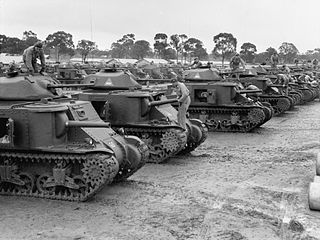 W
WThe Australian Army has used tanks from after the First World War, through the interwar period, the Second World War, the Cold War and to the present day. Throughout this period the Army has primarily been a light infantry force, with its tanks mainly being used in the direct support role. The Australian Army's tanks have seen combat during the Second World War and the Vietnam War, where they proved successful despite some of the designs employed being considered obsolete. The first Australian tanks were a small number of British medium and light tanks which were operated mainly for training purposes during the 1920s and 1930s.
 W
W